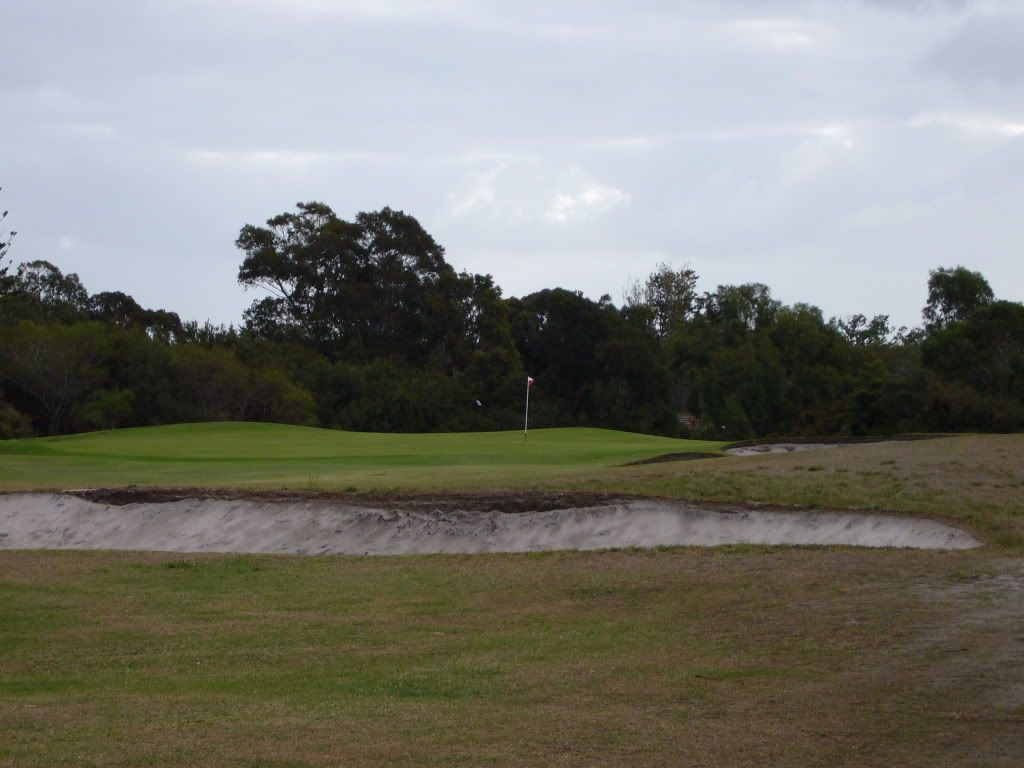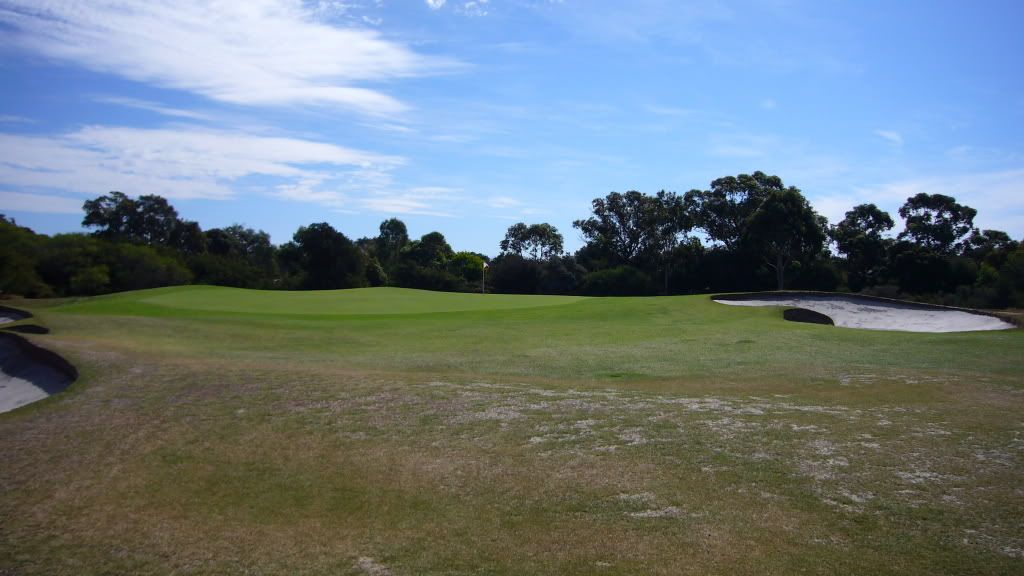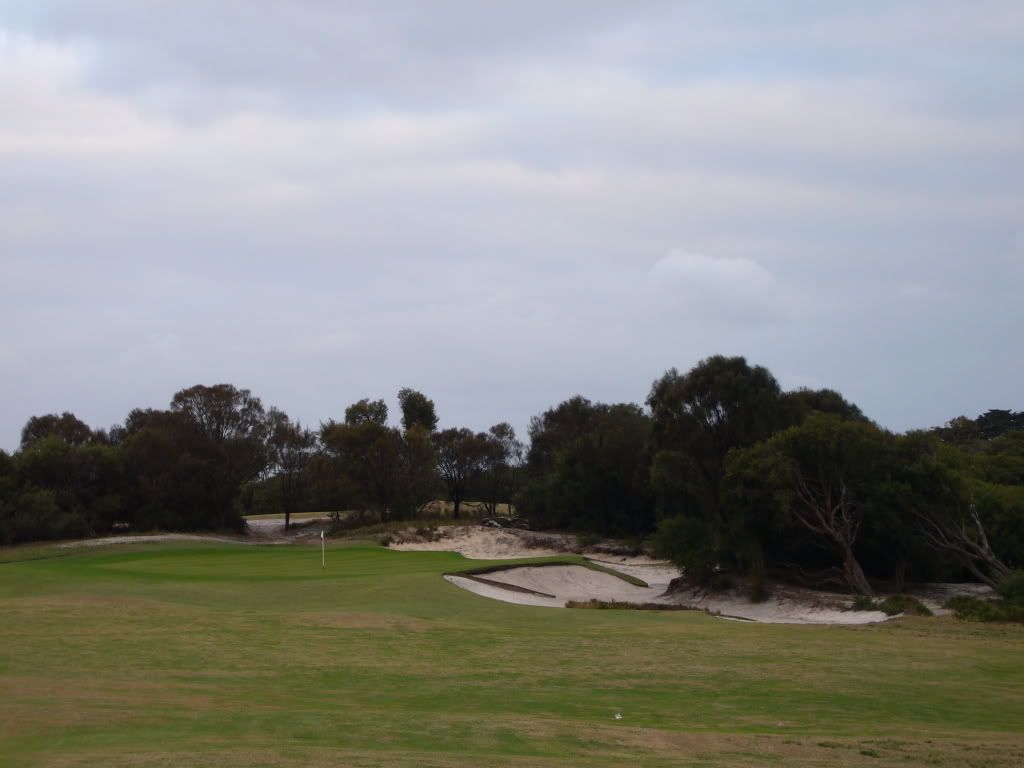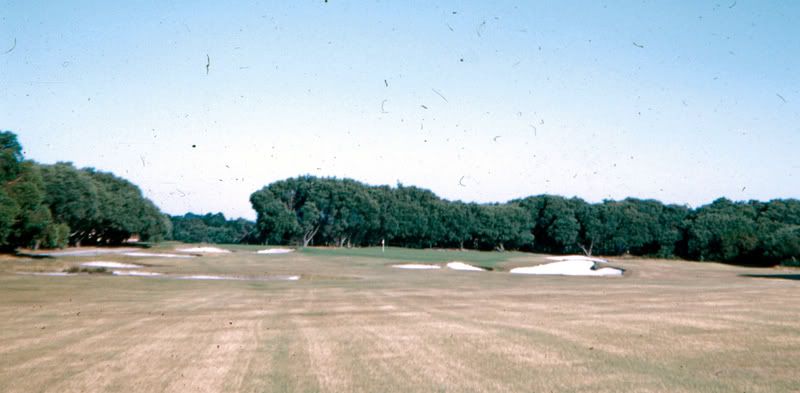We all know that any chimp, when not consumed with the decapitation of a neighbor, could frame a green. Big mounds and bunkers do the trick.
But are there more subtle and artful ways to frame greens -- assuming we believe greens should be framed in the first place. (An argument for depends on which side of the suppressio-veri / suggestio-falsi argument you fall, as well as the value you place on visibility.)
In his military and golf writings, Mackenzie commented that the principles of camouflage were equally valid to military and golf; the application differs in that one reverses the principle for golf. Visibility, rather than camouflage, is the goal.
One of the fundamental principles of the
doctrine of camouflage (there actually are several doctrines of camouflage) is disruptive patterning: break up the line.
So, the logical transposition for golf is that if the line is not broken up then visibility will increase.
One application of this transposition which I have found is what I call "Chippendale" greens: these are greens whose topline is well-defined, thus increasing the green's visibility.
I think many modern designers understand the general concept, but they botch it in the application. Specifically, they lard the back of a green with mounds that look dreadful. (As I have written before, I think what is missing from these mounds is the understanding of naturalist principles which can give mounds, if not a natural or camouflaged-natural look, at least an aesthetically pleasing look. This pleasure I believe comes from the mind's ability to quickly assess whether a form is in keeping with nature; in simple English, the mind processes very quickly and subconsciously whether something on a golf course "looks right.")
Examples of botching appear all too clearly, sadly, on Mackenzie courses that have been worked on by modern designers.
And so to this notion of "Chippendale" greens. I define this as a method of framing greens not with mounds, at least not with obvious mounding, but rather by designing a top line which is visible to golfers. Chippendale framing provides clarity without sacrificing aesthetic pleasure or subtlety.
It breaks a forced compromise.
I believe a critical principle for creating aesthetically-pleasing, naturalistic toplines is
a sinusoidal line. Sinusoidal motion has been demonstrated to require less energy than straight-line motion, and this is why a sinusoidal line implicitly is "natural" to us. (It is why rivers flow in a sinusoidal wave rather than a straight line.)
If I had the time, I would graph these toplines and take a crack at deriving the mathematical formula that explains them, then determine whether those lines truly are sinusoidal, and whether their parameters like angular frequency and amplitude are analogous to anything in nature. (I learned how to do all of this in a few minutes the other night while watching "Killer Waves" on The Science Channel.)
Maybe someone mathematically inclined out there would like to take on this fun project!
Great examples of this can be found at Royal Melbourne. Is this something Mackenzie taught Russell (and Morcom), or is this a lesson, an inference rather than directly taught, they took from Mackenzie? Does credit actually go to Crocky, who secretly rebuilt a number of the greens?
I haven't had time to go through my Mackenzie pictures and writing to present a truly compelling argument that Chippendale greens represent an intentional effort by Mackenzie to use transposed principles of camouflage for golf. Nevertheless I do believe Mackenzie must have conceived of Chippendale framing since he clearly and repeatedly wrote that one applied camouflage principles to golf by transposing those principles.
So for now here are a few pictures illustrating what I mean by topline framing:




Here "texture" is used with slope to create a visible topline -- note the contrast of grass with trees:

Lastly, my favorite example -- notice how the bunker toplines integrate with the green topline in a continuous sinusoid:
 Can you come up with any other pictures, from old or new designs, that illustrate Chippendale green framing and any principles of success I have missed?
Can you come up with any other pictures, from old or new designs, that illustrate Chippendale green framing and any principles of success I have missed?Mark